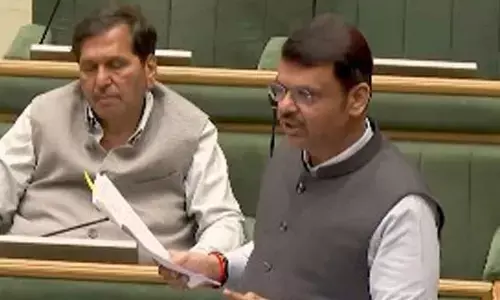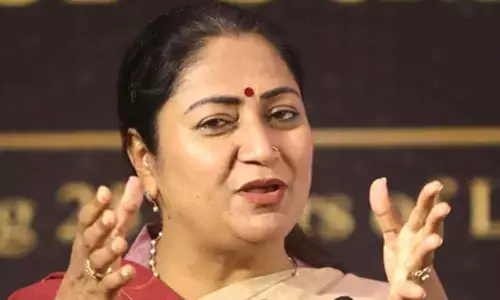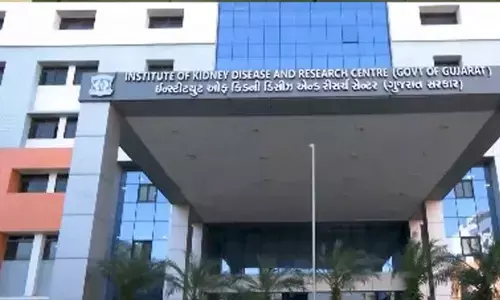Markets rise for 7th consecutive session; Bombay Stock Exchange climbs 460 points & Nifty ends at 18,477

Markets rise for 7th consecutive session; Bombay Stock Exchange climbs 460 points & Nifty ends at 18,477
The key barometers ended with strong gains on Monday, October 18, 2021. The S&P BSE Sensex jumped 459.64 points or 0.75 per cent to 61,765.59. The Nifty 50 index gained 138.50 points or 0.76 per cent at 18,477.05.
The key barometers ended with strong gains on Monday, October 18, 2021. The S&P BSE Sensex jumped 459.64 points or 0.75 per cent to 61,765.59. The Nifty 50 index gained 138.50 points or 0.76 per cent at 18,477.05.
Both the indices BSE benchmark index, the Sensex, and Nifty 50 hit another intraday high during the session, earlier in the day. Sensex scaled a fresh all-time high at 61,963.07, while Nifty 50 scaled a fresh all-time high of 18,543.15.
The Nifty Bank rose 343.90 points or 0.87 per cent to 39,684.80. In the broader market, the S&P BSE MidCap index advanced 0.95 per cent to 26,952.13, while S&P BSE SmallCap added 0.69 per cent to 30,100.80.
Buyers outnumbered sellers. On the BSE, 1035 shares rose and 995 shares fell. On the Nifty 50 index at the NSE, 28 shares advanced and 22 shares declined. The top five gainers on Nifty 50 were Hindalco (up 5.24 per cent), Infosys (up 4.79 per cent), Tech Mahindra (up 3.65 per cent), JSW Steel (up 3.32 per cent) and Tata Motors (up 2.45 per cent). The top five losers were Mahindra & Mahindra (down 2.21 per cent), HCL Technologies (down 2.10 per cent), Dr Reddy's (down 1.82 per cent), Asian Paints (down 1.69 per cent) and Britannia (down 1.36 per cent).
COVID-19 Update
Total Covid-19 confirmed cases worldwide were at 240,665,365 with 4,898,487 deaths. India reported 189,694 active cases of Covid-19 infection and 452,290 deaths, data showed.
Economy
Finance Minister Nirmala Sitharaman told global leaders and investors in an interaction in New York that India has undertaken several reforms to ease foreign investment in infrastructure, including fiscal benefits which have created opportunities for investors and industry in the country.
At a roundtable organised by FICCI and the US-India Strategic Partnership Forum, Ms Sitharaman said, with the current reset in the global supply chain and clear-headed and committed leadership in India, she sees opportunities galore in India for all investors and industry stakeholders.
The finance minister is on a week-long tour of the United States, where she met several business leaders and US government officials including treasury secretary Janet Yellen last week.
She said, India has fully leveraged the potential of digitisation even during the most challenging time of the Covid-19 pandemic. Ms Sithraman also highlighted that the role of technology in the financial sector is enabling pushing the frontier of financial inclusion. She said, fintech is playing a key role in this area, pointing to the opportunities in India, the minister said startups in India have grown tremendously and many are now raising money through capital markets. She said, this year itself, more than 16 of them will qualify as unicorns.
Euro-area inflation is set to peak this quarter and stay above the European Central Bank's 2 per cent goal through mid-2022, according to the latest survey of economists. The rate hit 3.4 per cent last month, with Germany and Spain running even hotter. While ECB President Christine Lagarde this weekend reiterated her view that the current spike is transitory, several policymakers have recently started to warn that price pressures could become more persistent, setting the scene for an intense discussion on the future of stimulus.
China's economy hit its slowest pace of growth in a year in the third quarter, hurt by power shortages, supply chain bottlenecks and major wobbles in the property market and raising pressure on policymakers to do more to prop up the faltering recovery. Data released on Monday showed GDP grew 4.9 per cent in July-September from a year earlier, the weakest clip since the third quarter of 2020 and missing forecasts.
The Chinese economy is facing several major challenges, including the China Evergrande Group debt crisis, ongoing supply chain delays and a critical electricity crunch, which sent factory output to its weakest since early 2020, when heavy COVID-19 curbs were in place.














